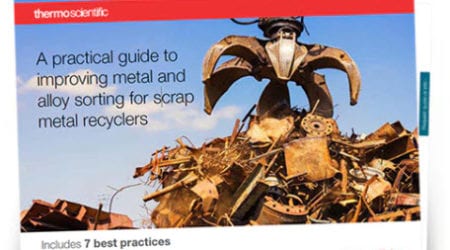Handheld LIBS analyzers are instruments used to determine the elemental composition of materials. LIBS is an acronym for the analytical technique Laser Induced Breakdown Spectroscopy.
Handheld LIBS analyzers work by using a high-focused laser to ablate the surface of a sample. A plasma is formed consisting of electronically excited atoms and ions. As these atoms decay back into their ground states, they emit characteristic wavelengths of light, or “unique fingerprints”. These “fingerprints” are distinct for each element, making handheld LIBS analysis an excellent tool for quantitative and qualitative measurements in the oil and gas, metal fabrication, and scrap metal recycling industries.
When purchasing a handheld LIBS analyzer, be sure to evaluate the following features before making your decision:
- Analytical Range. Only some handheld LIBS analyzers available today are able to measure key elements, such as carbon (C). Evaluate the analytical needs of your business to determine that your application can be supported without purchasing excess equipment.
- Repeatability. To ensure that you have a reliable instrument, be sure to closely evaluate repeatability. Variances in measurements will result in irregularities of finished goods. By verifying repeatability, you can guarantee the quality of your processes.
- Lightweight. Workers may be using the analyzer when deployed at heights, or for hours at a time. Fatigue is likely to set in sooner with instruments weighing over 7 pounds.
- Hot Swap Battery. Look for an analyzer that has a hot swap battery to help reduce downtime when performing measurements. Bonus points if it is commercially available at major retailers.
- Cameras. Search for equipment that has both micro and macro cameras to support sample positioning and documentation through objective quality evidence. A micro camera precisely pinpoints your exact measurement, while a macro camera collects full sample imagery.
- Miniaturized Geometry. Instruments with a tapered nose are great candidates for achieving maximum coverage in difficult to reach areas. Evaluate whether you’ll be able to access tight welds, corners, and joints.
- Safety Interlocks. Check for multiple robust laser safety interlocks to ensure that users are protected during operation. Laser safety interlocks should be independently validated by a third-party laboratory.
- WiFi Connectivity. Off-site workers may need access to key analytical information. Enable a seamless exchange of data with WiFi connectivity.
- Easy Navigation. A tilting, color touchscreen and optional directional keys make it easy for users to navigate through menus and sample readings. Be sure to verify that touchscreens can also be operated with gloves on.
- Splash/ Dustproof. Protection from splashes and dust are key in any industrial environment. Look for a minimum rating of IP54 to ensure splash and dustproof claims are validated.
For more information:
- FAQs – Niton Apollo Handheld LIBS Analyzer
- Low Alloy / Carbon Steel Library Technical Reference Sheet
- How Does LIBS Work? Technology page
- Handheld XRF & LIBS Safety Training
Additional Resources:
- Download our free eBook: A Practical Guide to Improving Steel Manufacturing Processes and Production Methods
- Visit our center for Improving Steel Manufacturing Processes and Production









Leave a Reply